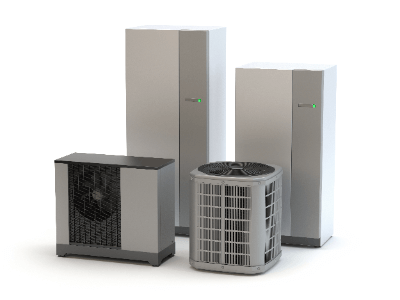What Is an HVAC?
 An HVAC refers to equipment that supplies heat to buildings, condominiums, factories, automobiles, railroad cars, ships, and other specific facilities.
An HVAC refers to equipment that supplies heat to buildings, condominiums, factories, automobiles, railroad cars, ships, and other specific facilities.
Electricity, gas, oil, and coal are widely used as energy sources for HVACs. Typical examples include boilers, heat pumps, and hot water equipment.
In recent years, the environmentally friendly decarbonized society has been widely promoted, and efforts are being made to implement heat sources that do not involve combustion, such as solar power, and geothermal heat sources such as hot springs, for circulating HVAC.
Usage of HVACs
Boilers, chillers, and heat exchangers are well-known HVAC equipment used in buildings and condominiums. The maintenance of each type of HVAC equipment requires specialized qualifications, such as a boiler technician or a refrigeration equipment manager.
In addition to refrigeration equipment that generally uses chlorofluorocarbons for cooling, there are also chillers that utilize circulating water for cooling, which are often used in factories, etc. Various types of HVACs are used depending on the scale of the equipment or space to be cooled and the energy efficiency of the equipment.
Principle of HVACs
This section describes the principles of HVACs used in offices, hospitals, factories, and other business establishments of a certain size, with particular emphasis on examples of energy efficiency improvement through circulation.
A common practice in offices of a certain size is to install HVAC equipment (e.g., absorption chiller/heaters) together in front of the air conditioning system. The HVAC produces cold and hot water and circulates the water at the appropriate temperature using pumps and piping. The heat is then used for heat exchange in the air conditioning equipment.
Specifically, absorption chiller/heaters use a circulation process in which water vapor is absorbed by a lithium bromide solution, heated to regenerate a thick lithium bromide solution and water vapor, then cooled in a condensation process to return to water. The vaporization heat of the water in the water cooling pipes is then used to cool air in air conditioning.
This highly efficient circulation saves energy and improves the office’s appearance by combining the HVAC facilities in a single location. There are also examples of combining these absorption chillers/heaters with electric chillers and other electric heat storage systems that utilize nighttime electricity (ice thermal storage is the most common due to space limitations).
These state-of-the-art HVAC systems are advantageous in energy conservation and high efficiency. However, they also require initial capital investment and maintenance. Therefore, it is necessary to select the most appropriate HVAC system according to the various conditions of the business site (size and priority areas).